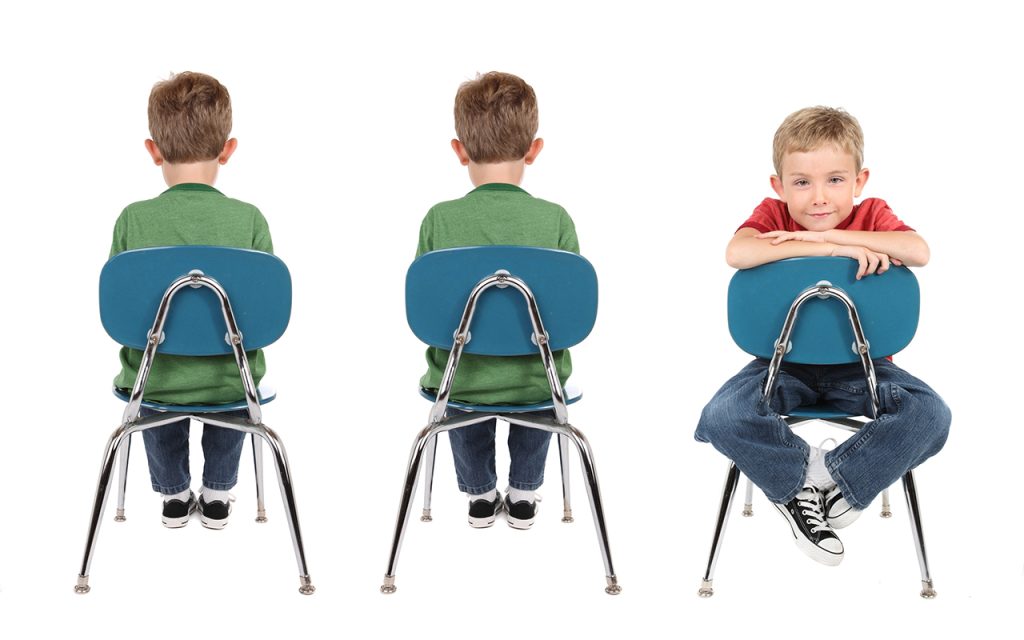
By Kim Norton
Kids with ADHD (Attention Deficit Hyperactivity Disorder) are characterised as having difficulties with inattentive and hyperactive/impulsive behaviours such as time blindness, distractibility, forgetfulness, impulsivity and hyperactivity. Whether dealing with a predominantly inattentive (once called ADD), attentive, or combined diagnosis, these kids need suitable modifications and additional support at home and in the classroom to reduce anxiety and facilitate learning.
Typical attentive behaviours as a result of hyperactivity can challenge our kids with ADHD manifesting as restlessness, fidgeting and excessive talking as can inattentive behaviours such as poor focus, concentration, listening skills, disorganisation and perceived laziness or apathy. All of these challenges make it difficult for our kids with ADHD impacting their learning, social relationships, daily functioning, and general wellbeing. Without suitable modifications and additional support, these challenges can result in an anxiety disorder, low self-esteem and depression, oppositional behaviour, school refusal, after-school meltdowns, emotional dysregulation, risk-taking and family breakdown.
So, what can be done at home?
- Daily routines and visual aids:
Create daily schedules that outline specific times for daily and weekly activities including homework, appointments, and chores. Make sure that there is allowance for downtime and blocks of time for when things may “change.” Consistency and predictability can help children with ADHD stay organised and help to alleviate anxiety. - Break household tasks into smaller steps:
Help your child break down tasks into smaller, manageable steps.
This makes it easier for them to focus and complete tasks without feeling overwhelmed. - Bedtime routine:
Establish a successful bedtime routine that includes minimal use of electronic equipment after dinner and includes calming activities before sleep. Some calming activities to help promote quality sleep include meditation, drawing, journalling, and listening to music. - Australian Bush Flower Essences:
100% natural and without affecting other medications, Cognis Essence gives clarity and focus when working, speaking, reading, or studying. It enhances all learning abilities and skills and helps to alleviate daydreaming, confusion and overwhelm. This blend can be made up here or purchased from selected health food shops and chemists. - Exercise:
Regular physical exercise can improve focus and concentration and alleviate stress. - Nurture their strengths:
Strengths such as being highly creative and hyper-focused on things they love and enjoy can be used as motivators and also to promote good mental health. - Brain Breaks:
Providing our kids with brain breaks or sensory breaks at home to help our children calm down, focus, learn and self-regulate.
What can be done in the classroom? - Develop a code:
Devise a sign for the student to use so that the teachers know they need help with their work or that they need a break. Some students use a laminated card to show the teacher whilst other more reserved students use a hand signal or code word. The simple act of reading a book or completing a calming task at the desk can also be used to alert the teacher. - Seating:
Have the student sit near the front of the classroom and near the teacher where they can see the blackboard/whiteboard clearly. Ensure that they can also see the entrance to the classroom and
not be seated with their back to the door or to other students. - Creating a structured routine:
Establishing a predictable daily schedule can help children with ADHD stay organised and focused. Pre-warn the student of any change to routine where possible. - Breaking tasks into smaller, bite-sized pieces:
Breaking down larger tasks into smaller, manageable steps can help children with ADHD stay focused and complete tasks more effectively. Use visual aids, checklists, and timers to help them keep track of time and to understand the expectations of the length of each task. - Providing clear and concise instructions:
Keep instructions simple and to the point. Use visuals or gestures to reinforce verbal instructions when possible. Make sure to capture the student’s attention before giving any instructions and have the student repeat instructions back in their own words so that their level of comprehension is understood. - Allow and plan movement breaks:
Allow children with ADHD short breaks to move around and release extra energy. Encouraging physical activity like whole class jumping jacks or having the student in question walk with another student to the toilet or another classroom. - Providing tools to help them focus:
Create a quiet area in the classroom where children with ADHD can retreat when they need a calm and focused environment to work. This can be a corner with minimal distractions or noise-cancelling headphones. Appropriate sensory tools, like stress balls or fidget toys at the desk, can help with better concentration during learning tasks.
Every child with ADHD is unique and so the specific type and level of support needed can vary. It is important for teachers, parents, and professionals to regularly communicate and collaborate so that tailored assistance can be offered at home and in the classroom to reduce anxiety and facilitate learning.
Kim is a Holistic Counsellor specialising in stress and anxiety management for kids, teens, and adults. Kim provides a unique, intuitive, and individualised therapy approach through individual, small group, and family counselling sessions both online and at her studio in Langwarrin. For more information, visit website: www.rainbowlighttherapies.com.au
